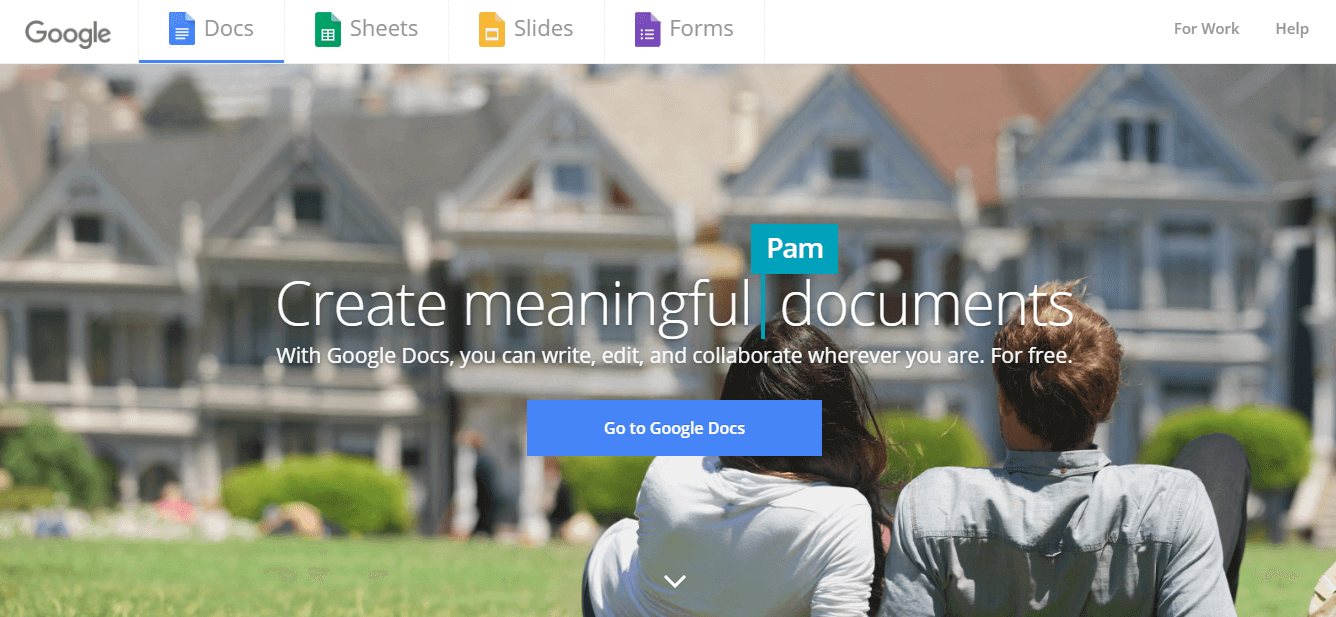

#Google docs sign in how to#
Microsoft Edge based on Chromium (macOS and other non-Windows platforms)įor Microsoft Edge based on Chromium on macOS and other non-Windows platforms, see the Microsoft Edge based on Chromium Policy List for information on how to add the Azure AD URL for integrated authentication to your allowlist. If you've overridden the AuthNegotiateDelegateAllowlist or AuthServerAllowlist policy settings in your environment, ensure that you also add the Azure AD URL ( ) to these policy settings. Microsoft Edge based on Chromium (all platforms)
#Google docs sign in windows#
Instructions for joining your macOS device to Windows Server AD are outside the scope of this article. Safari (macOS)Įnsure that the machine running the macOS is joined to Windows Server AD. You can also set the PrivateBrowsing option to true to allow Seamless SSO in private browsing mode. If you're using the Authentication policy settings in your environment, ensure that you add the Azure AD URL ( ) to the SPNEGO section. The next sections have information about Seamless SSO that's specific to different types of browsers. Key Path: Software\Microsoft\Windows\CurrentVersion\Internet Settings\ZoneMap\Domains\\autologon Go to User Configuration > Preferences > Windows Settings > Registry > New > Registry item.Įnter or select the following values as demonstrated, and then select OK. Select Allow updates to status bar via script.Įnable the policy setting, and then select OK. Go to User Configuration > Policies > Administrative Templates > Windows Components > Internet Explorer > Internet Control Panel > Security Page > Intranet Zone. This action adds the Azure AD URL to the restricted zone and Seamless SSO fails for the users all the time. If you want to prevent some users from using Seamless SSO (for instance, if these users sign in on shared kiosks), set the preceding values to 4. Value (Data): 1 indicates the intranet zone. Value name: The Azure AD URL where the Kerberos tickets are forwarded. Select Site to Zone Assignment List.Įnable the policy, and then enter the following values in the dialog: Go to User Configuration > Policies > Administrative Templates > Windows Components > Internet Explorer > Internet Control Panel > Security Page.

Open the Group Policy Management Editor tool.Įdit the group policy that's applied to some or all your users. There are two ways you can modify user intranet zone settings: OptionĪdmin locks down editing of intranet zone settingsĪdmin allows editing of intranet zone settings Browsers don't send Kerberos tickets to a cloud endpoint, like to the Azure AD URL, unless you explicitly add the URL to the browser's intranet zone. For example, maps to the intranet zone, and maps to the internet zone (because the URL contains a period). Why you need to modify user intranet zone settingsīy default, a browser automatically calculates the correct zone, either internet or intranet, from a specific URL. Learn how to set up Mozilla Firefox and Google Chrome on macOS. The following instructions work only for Internet Explorer, Microsoft Edge, and Google Chrome on Windows (if Google Chrome shares a set of trusted site URLs with Internet Explorer). It isn't required for direct user sign-ins. This prerequisite is applicable only when you enable the Seamless SSO feature. If URL-based proxy exceptions aren't possible in your organization, you can instead allow access to the Azure datacenter IP ranges, which are updated weekly. If you require a specific URL instead of a wildcard for proxy configuration, you can configure, where tenantid is the GUID of the tenant for which you're configuring the feature. If your firewall or proxy allows, add the connections to your allowlist for *. URLs over port 443. You use Azure AD Connect version 1.1.644.0 or later.
#Google docs sign in password#
If you use password hash synchronization as your sign-in method and there's a firewall between Azure AD Connect and Azure AD, ensure that: Set up your Azure AD Connect server: If you use pass-through authentication as your sign-in method, no other prerequisite check is required. To deploy Seamless SSO for Azure AD by using Azure AD Connect, complete the steps that are described in the following sections.Įnsure that the following prerequisites are in place: Seamless SSO provides your users with easy access to your cloud-based applications without using any other on-premises components. Azure Active Directory (Azure AD) Seamless single sign-on (Seamless SSO) automatically signs in users when they're using their corporate desktops that are connected to your corporate network.


 0 kommentar(er)
0 kommentar(er)
